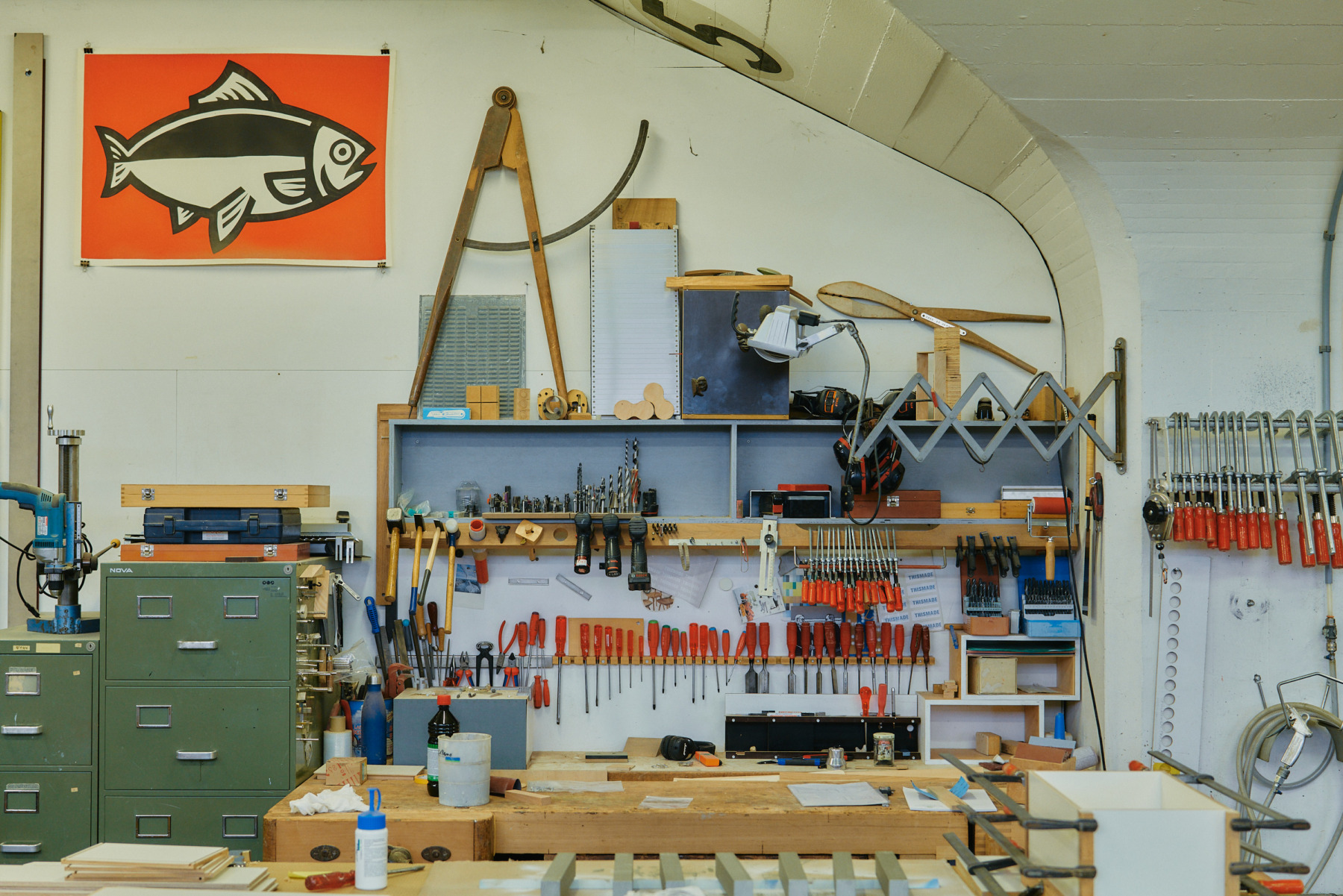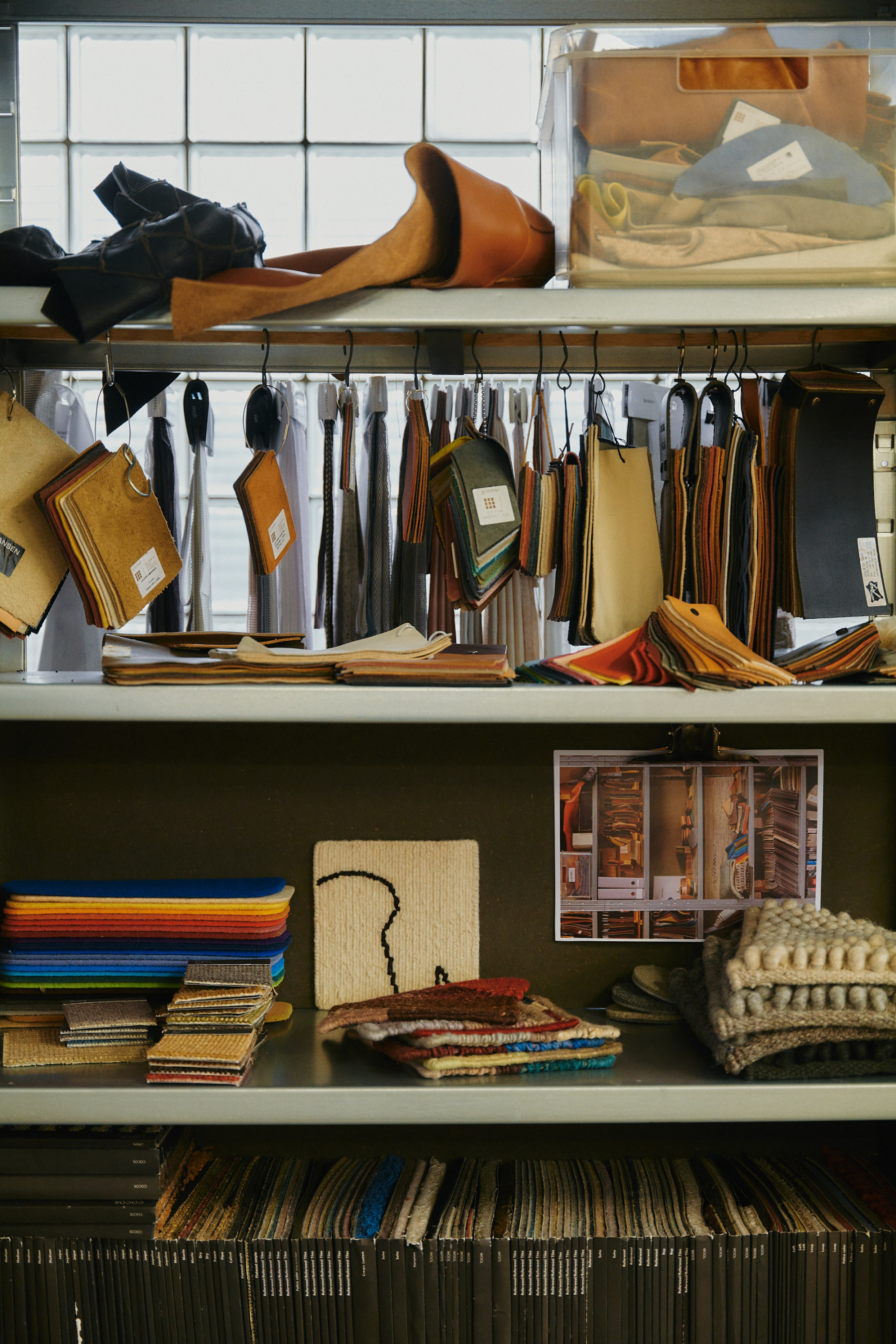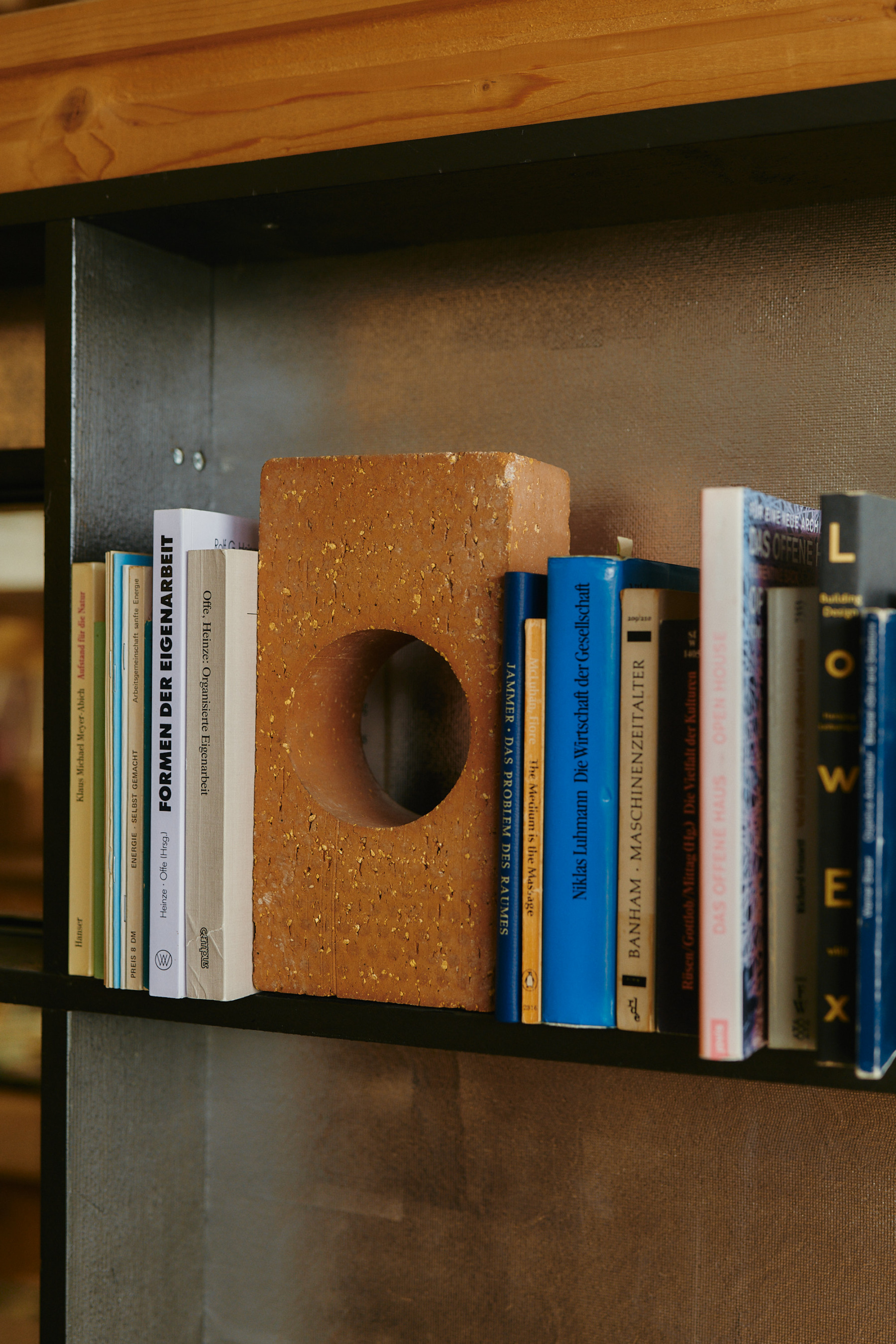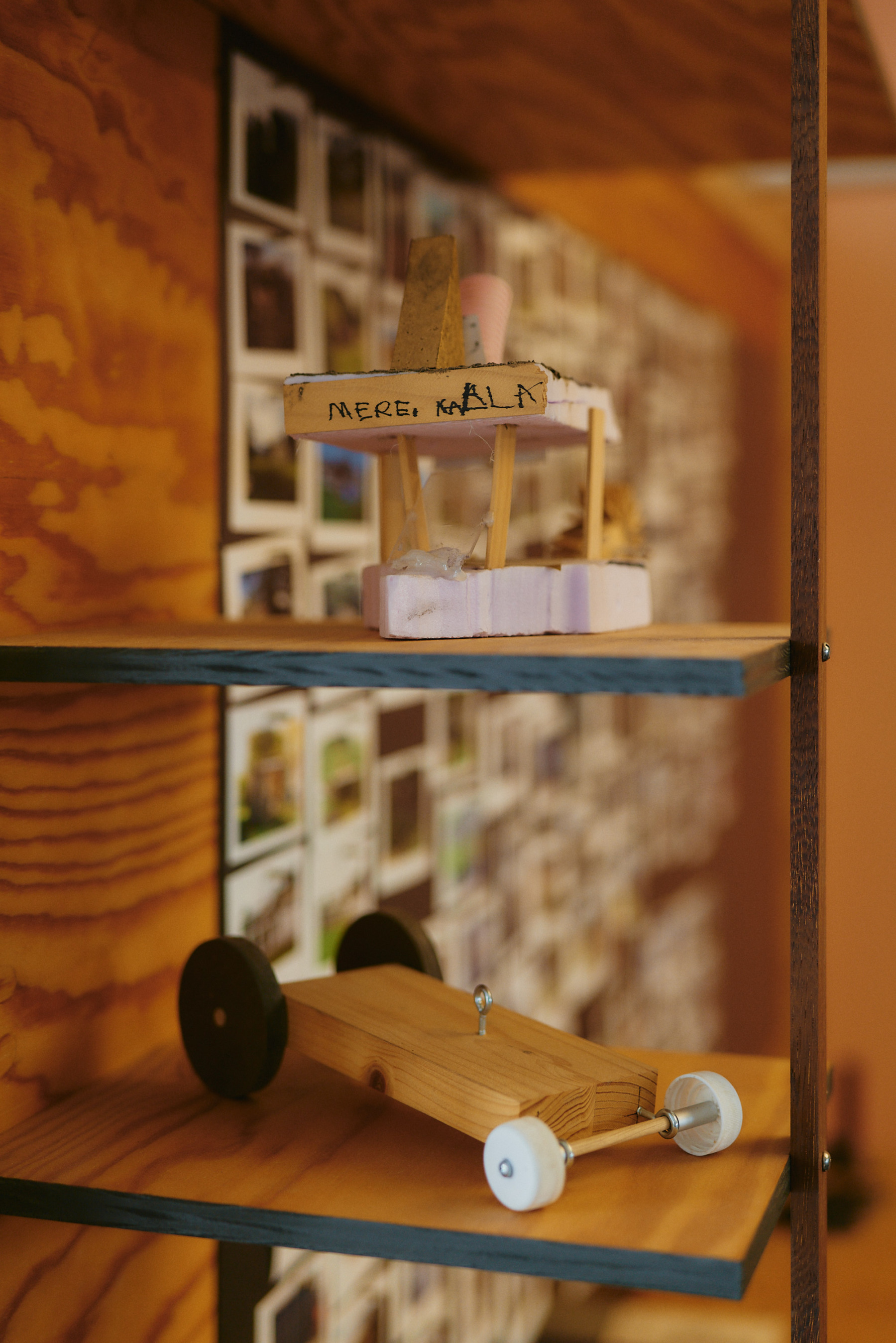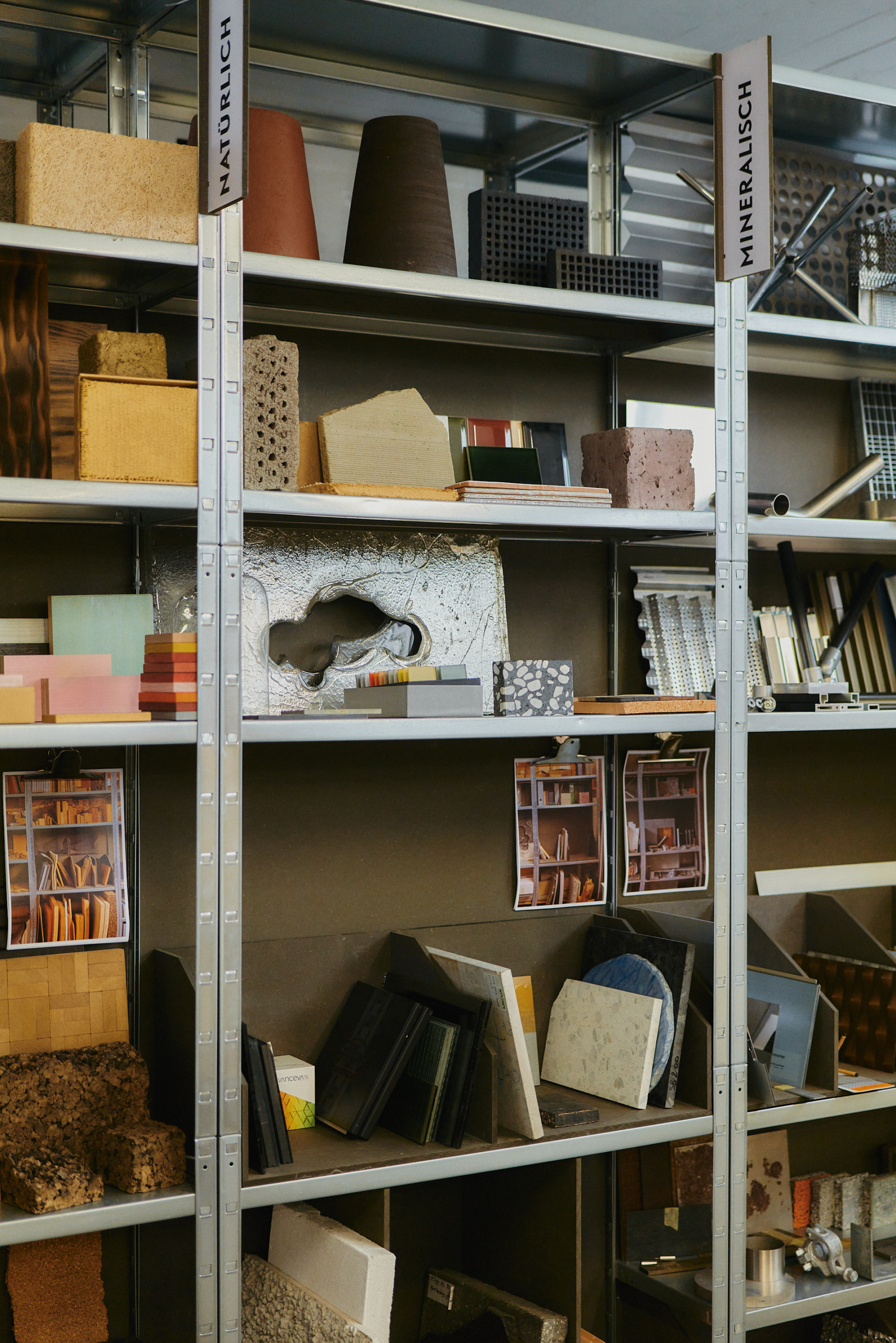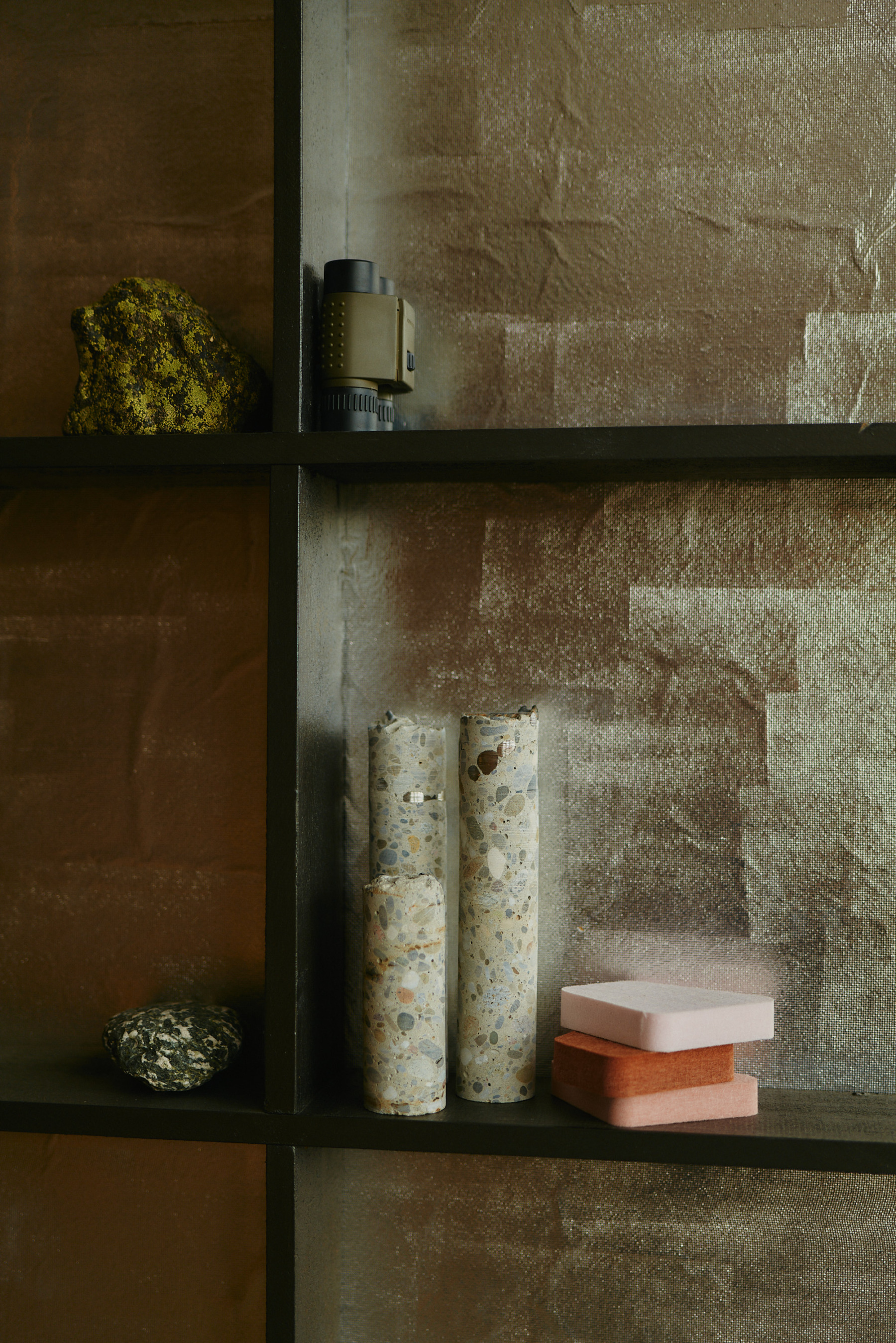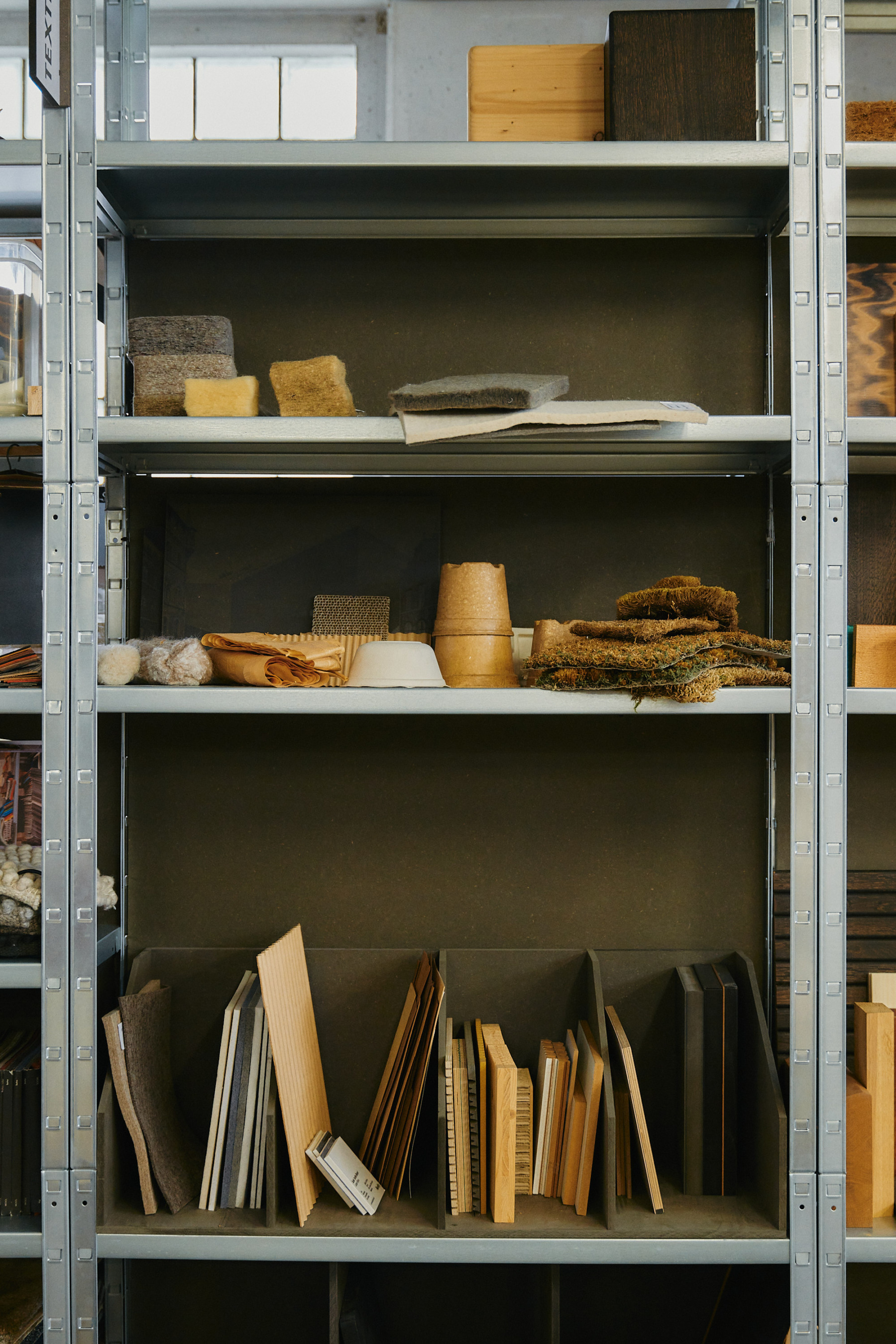When the founders of the multidisciplinary design studio INCHfurniture, Thomas Wüthrich and Yves Raschle sought acoustic insulation for their offices on the banks of Basel’s Rhine River, they thought about acoustic specialists Impact Acoustic. They asked whether Impact—100 kilometers away in Lucerne—had any leftover sound-absorbing materials they could use. This simple inquiry catalyzed a collaboration that gave rise to a new product prototype, which sets a new aesthetic standard for scrap materials.
Reflecting on the evolution of their “eco-intelligent” approach to materials, Thomas and Yves took us back to the studio’s early days to trace the contours of a fortuitous partnership between two design studios who are setting new aesthetic standards for post-consumer waste. It begins just below the equator.
This interview was produced in collaboration with Swiss manufacturing company and sustainable design lab Impact Acoustic. It is part of an educational series that charts the evolution of Impact Acoustic and the creative possibilities of working with waste through the eyes of its founders and creative collaborators.

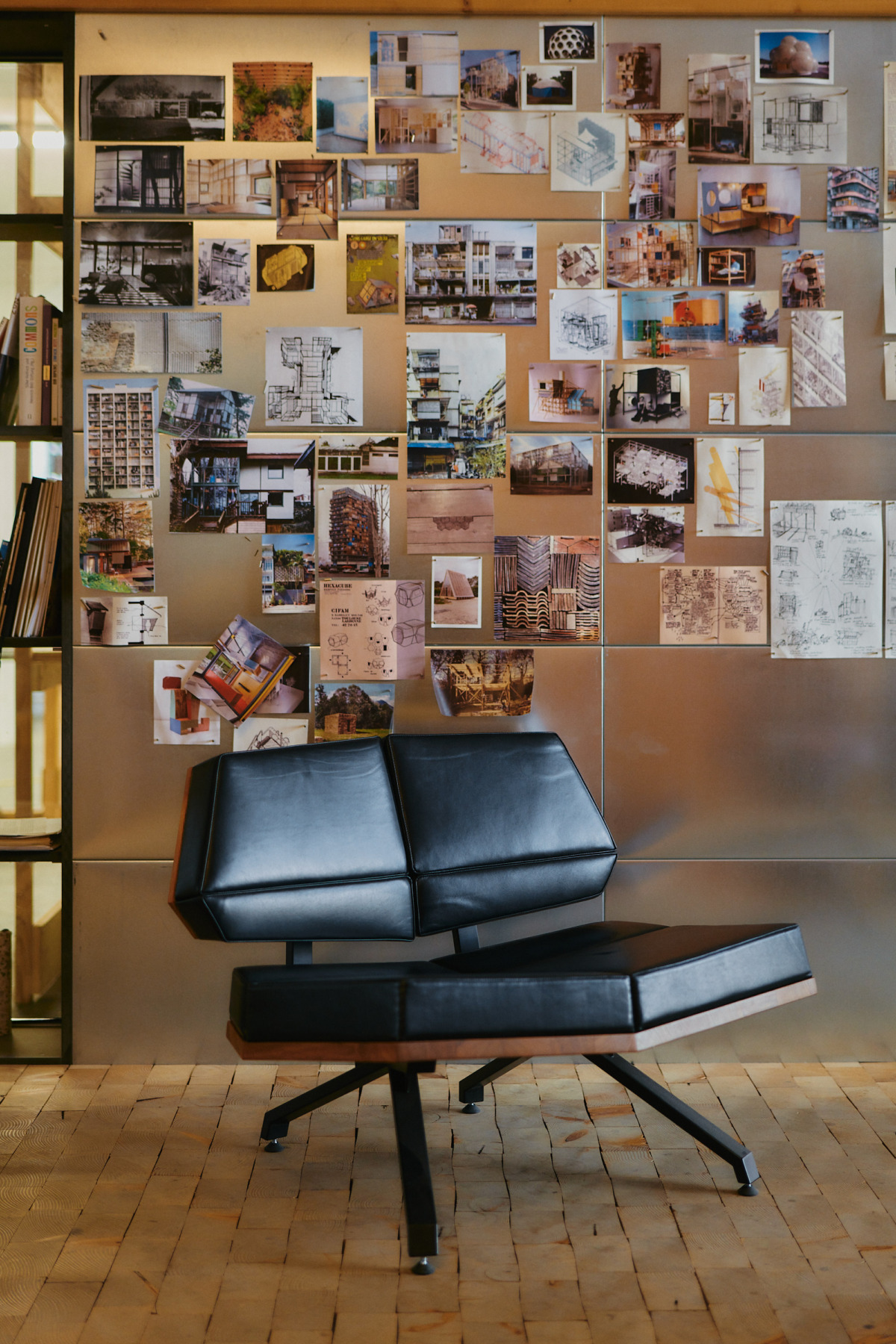
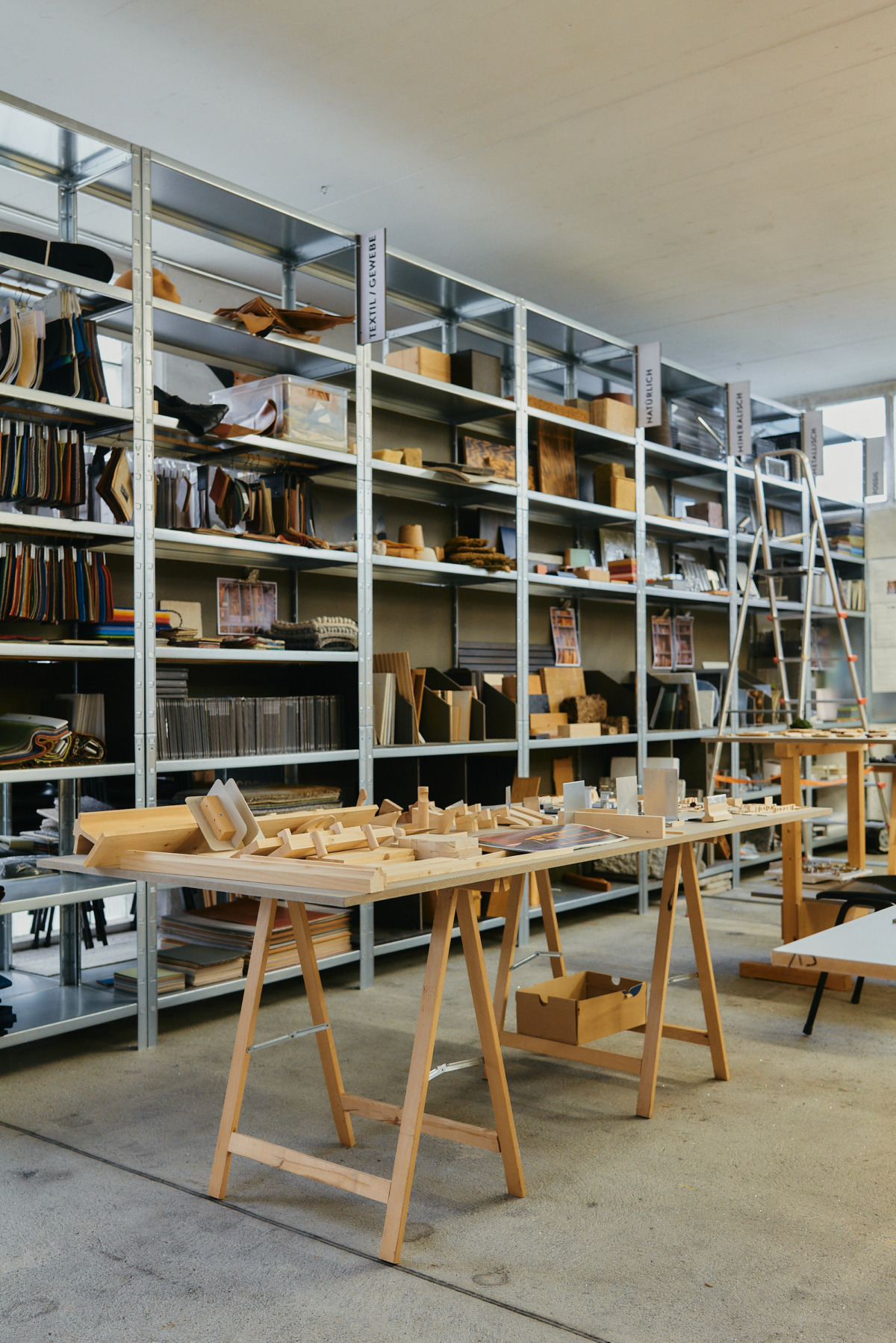
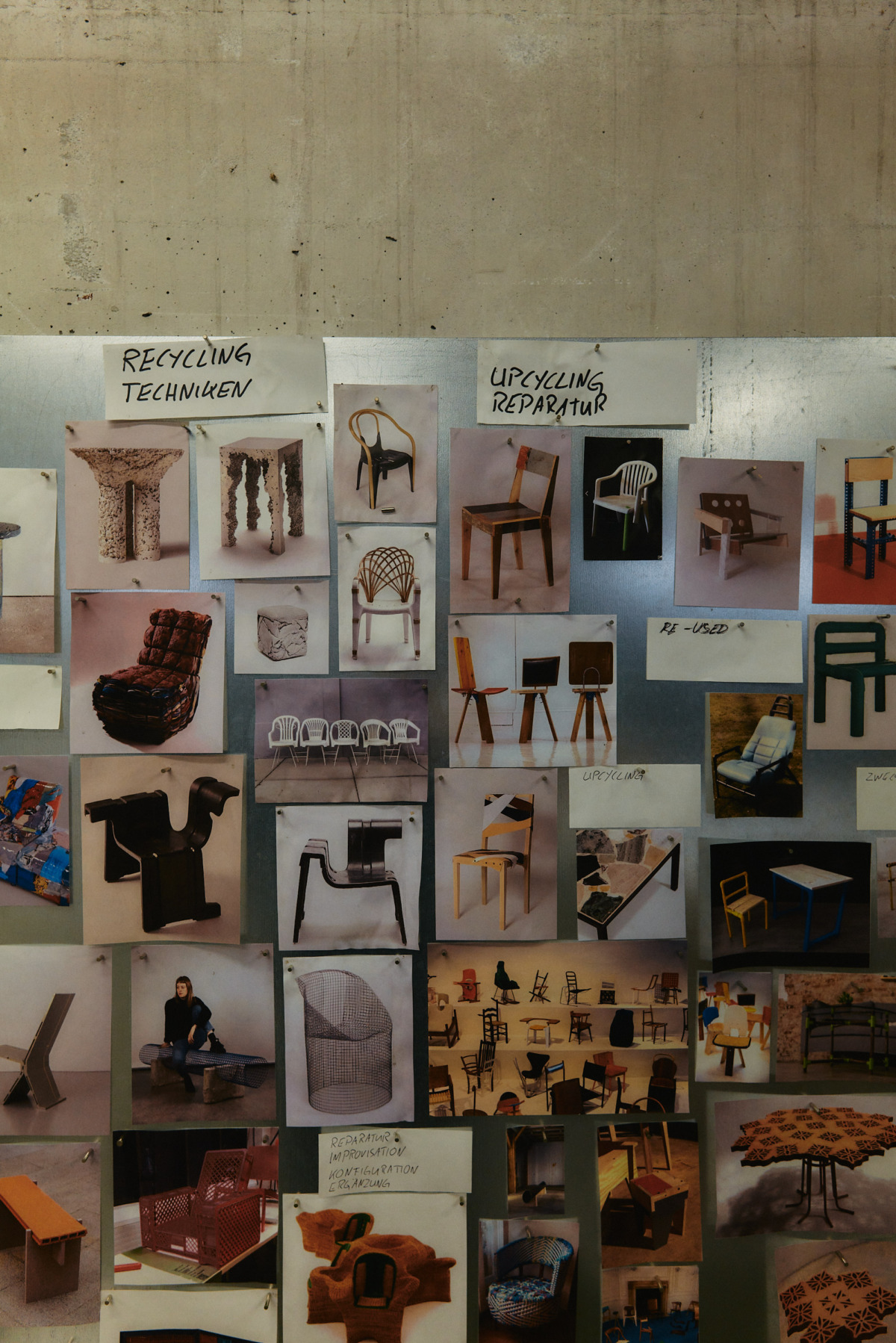
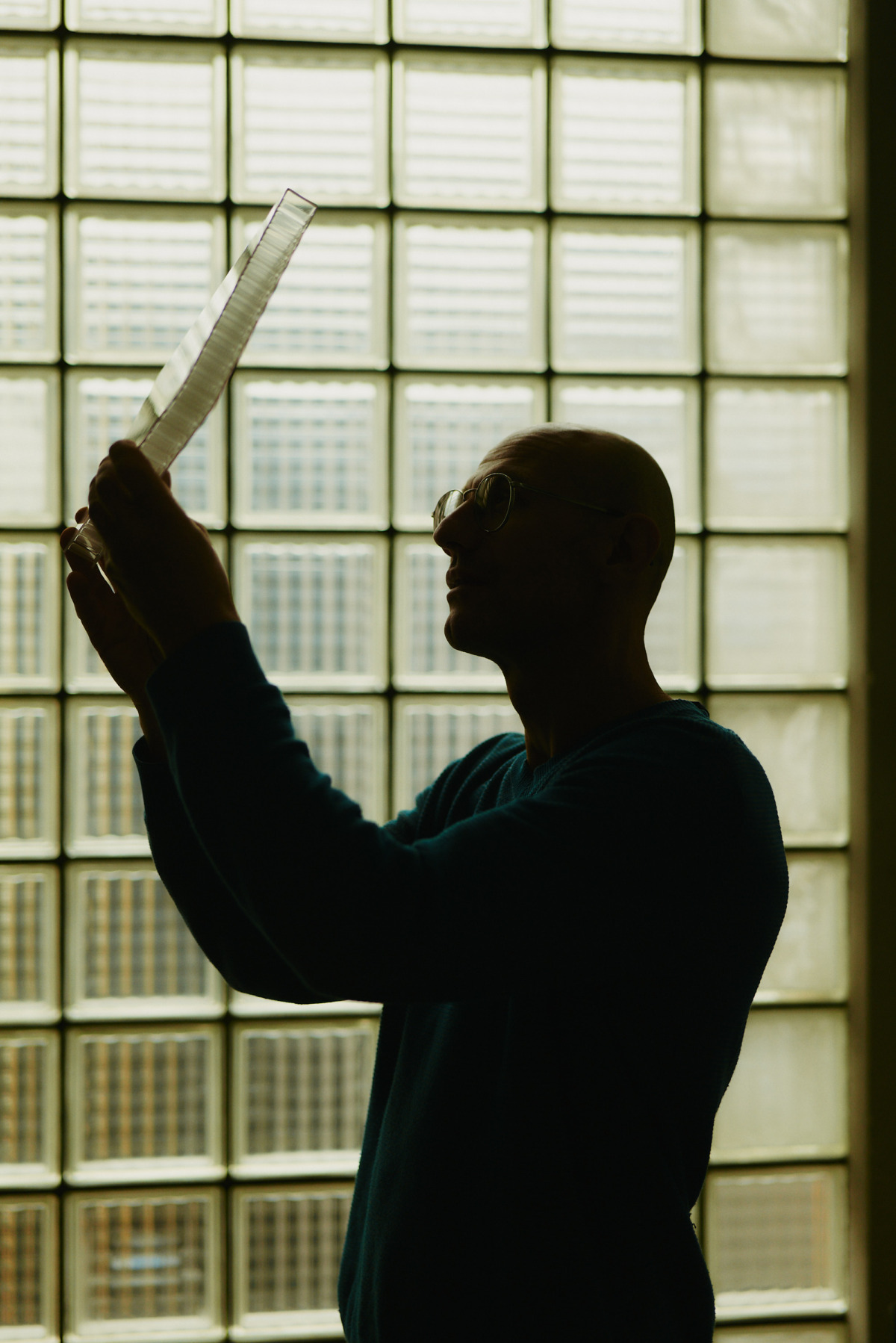
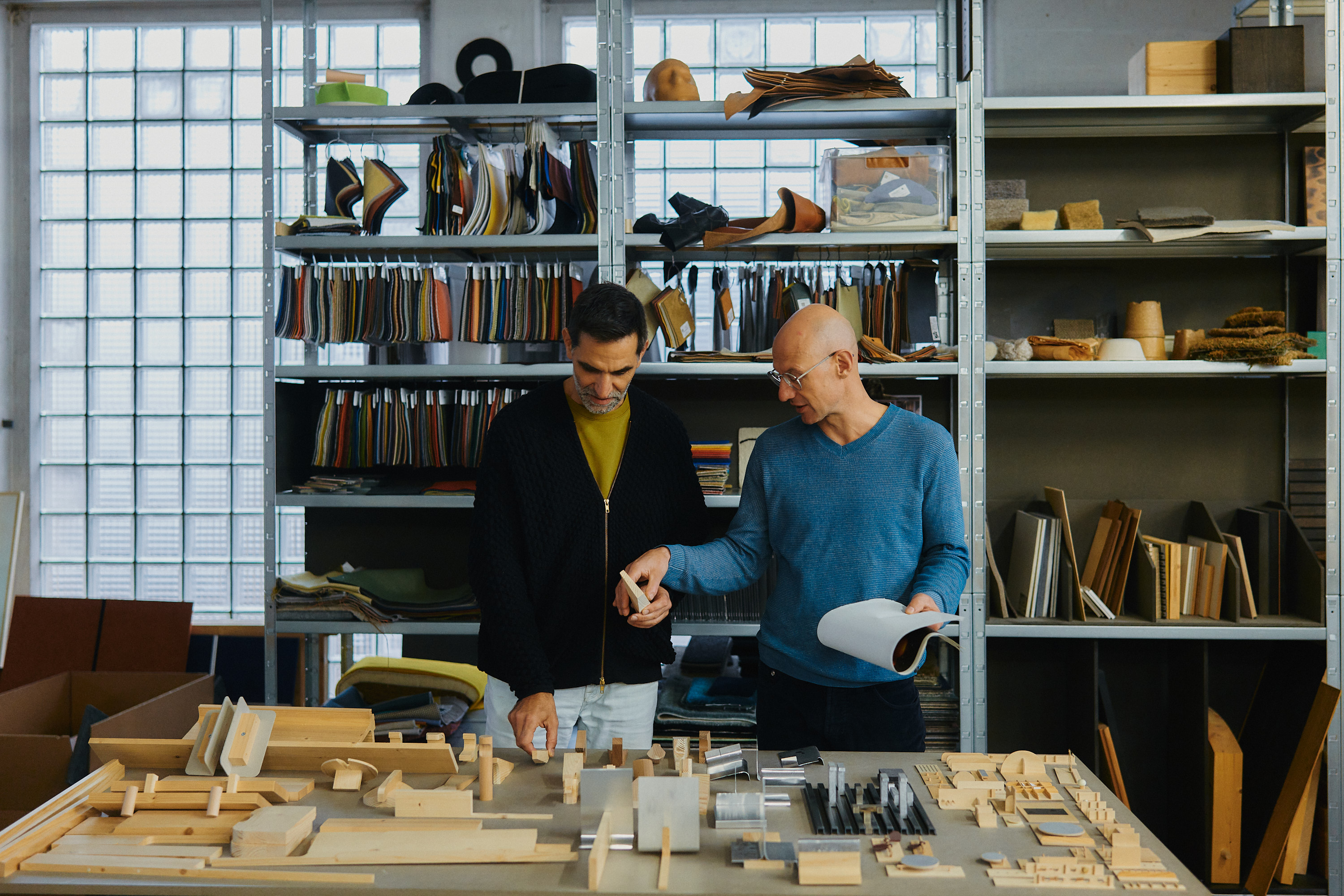
-
Before its formal founding in 2007, the seeds for INCHfurniture were sown at the PIKA Industrial Woodworking School in Java, Indonesia in 2004. How did you find yourselves there?
Thomas— Yves and I got to know each other while studying product design. After our studies, we both completed our Civilian Service in Kalimantan, the Indonesian part of Borneo. There, we made furniture for a Swiss NGO. After this assignment, we returned to Switzerland, and set up a sort of exchange program with a school called PIKA, to see whether it’d be possible to create furniture together. We founded INCH based on this experience—‘IN’ stands for Indonesia and ‘CH’ for Switzerland.
-
From those early days to a multidisciplinary design office in Basel’s Rhine harbor today—how has the studio evolved?
Yves— In the beginning, we very much focused on furniture. We produced a collection that was very limited in its materials—wood, and metal—and that was produced in two locations. While the focus was on the product, it also gave us a deep insight into sustainability. On the one hand, social sustainability, as in the work conditions and production contexts, and on the other hand, raw materials, particularly wood.
At that point, spatial design wasn’t such a big part of our practice. The first time we got involved in it was when our friends at Buchner Bründler Architekten in Basel—who built the Swiss pavilion at the 2010 Expo Shanghai—asked us to create furniture for the pavilion. Our resulting Shanghai Collection was the first designed for a particular space; there was a total connection.
Thomas— As a result of that commission, we received further inquiries from architecture firms, which also involved site-specific furniture, and so our business model developed naturally through us tailoring the furniture to specific spaces.
“[Circularity] is no longer a ‘nice-to-have’ or ‘cherry on top’; this is the new imperative for how product design can actually make a difference.”

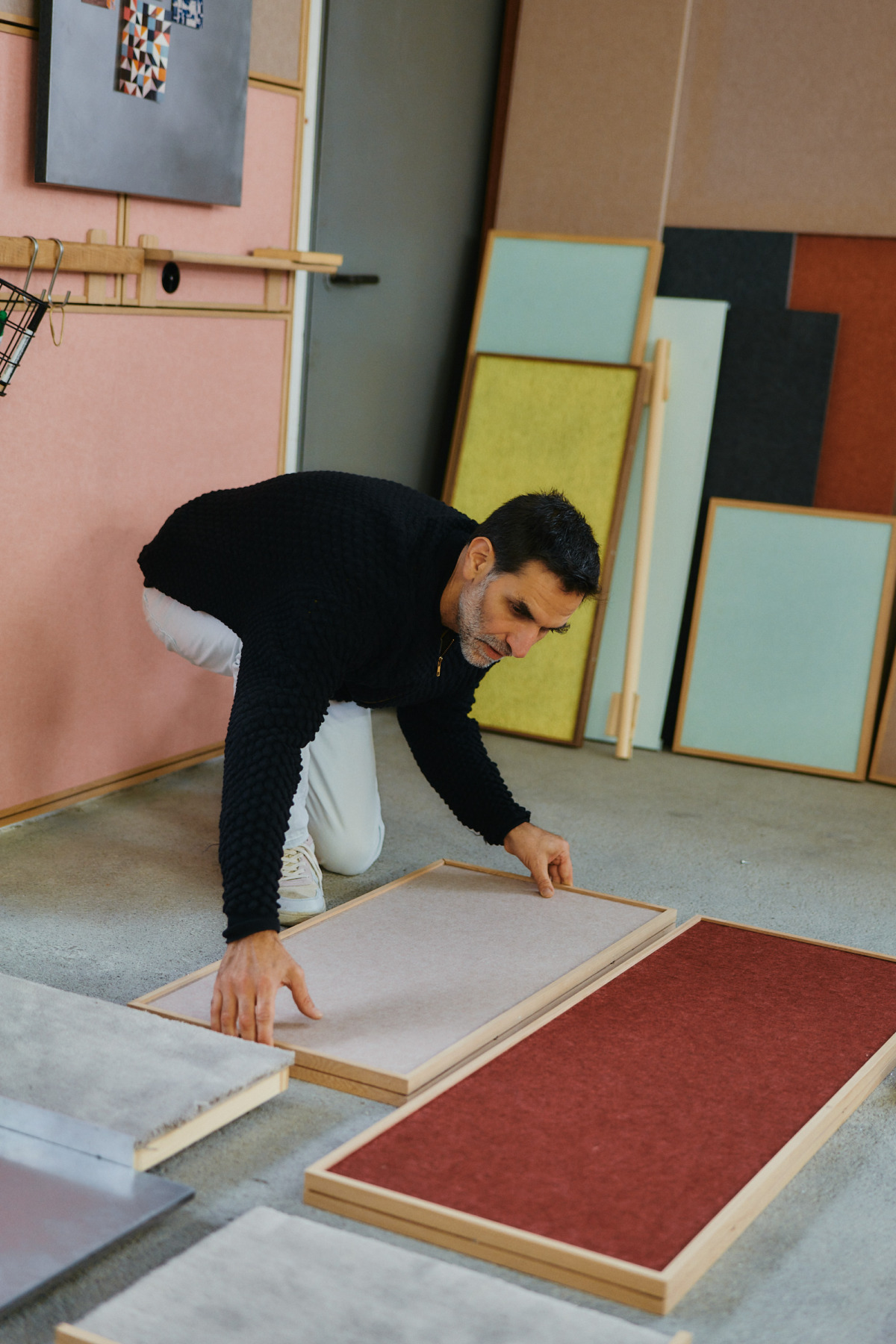
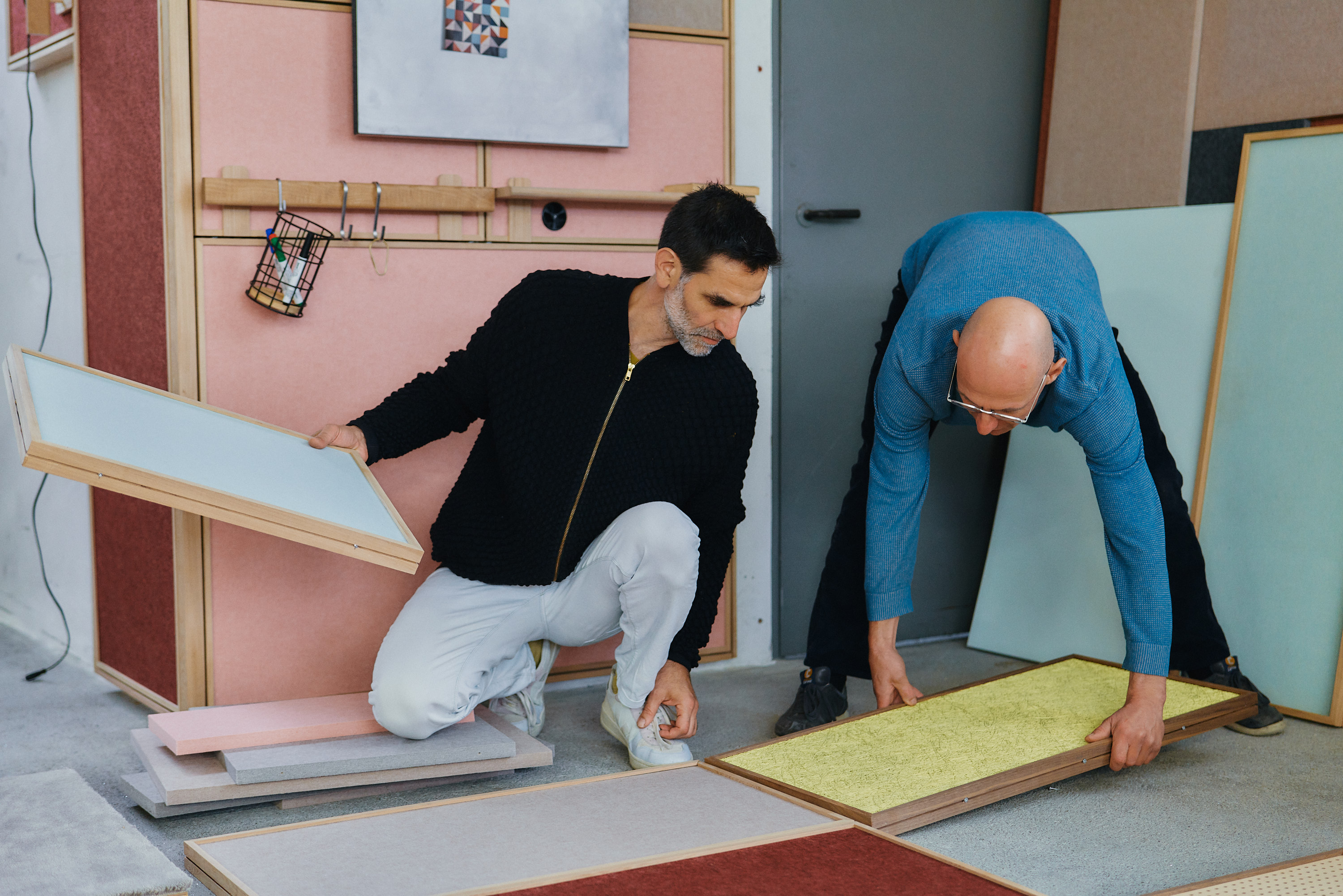
-
Today, your own space brings together multiple functions—a planning office, material archive, prototype collection, and workshop—under one roof in a historic warehouse on Basel’s Rhine harbor, designed to facilitate your emphasis on practical, hands-on design processes. Why is it important that designers get, and stay, hands-on?
Thomas— The book ‘Resonance: A Sociology of Our Relationship to the World’ by Hartmut Rosa helped me understand why that’s important in the design process. When you come into contact with something, a certain resonance arises. This can occur through conversations, or simply working with a material. I’ve often found that very early on in a project, we’ll be standing in the modeling workshop and we’ll make something without really knowing what it’s meant to be. Sometimes it’s more about subverting mental processes by focusing on manual ones. At INCH, we don’t separate planning and execution or digital and analog—it’s fluid. That’s why we’ve designed our rooms to accommodate this fluidity. The rooms encourage movement between workshops and workspaces. There’s no hierarchy among them. Despite having different functions, they’re all equally important.
-
How did the notion of resonance play out in your collaboration with Impact Acoustic?
Thomas— We wanted to insulate the walls of our office, and we wanted a material with acoustic absorption properties that looked nice and was made from scraps. So we asked Impact Acoustic if they had any leftovers. They responded, “Yes, a lot of them,” and said that they’d also like to find a way of dealing with leftovers. Our respective requirements led to this collaboration in which we developed not just a product for the office, but a product that offers the possibility of transforming leftovers into a fully-fledged, high-quality material. The collaboration was a really interesting, flowing process.
Yves— What emerged from the process is a modular system. The leftover pieces work in relation to one another. It’s like a pattern, there’s always logic in it. That means you can play with the design. In the development process, we explored how colors, proportions, and sizes could work together in a modular system. We chose to put them in wooden frames—quite like picture frames—made of wood. You can see it’s a product and not just a wall covering.
Alongside these aesthetic considerations, we treated the leftovers through a sustainable lens. For example, they’re clamped together. Normally, these panels are glued on with construction adhesive so when you want to take them off again, the panel will break and end up in the bin. With our system, the fact that they’re only clamped means that if one is defective or dirty, you can turn it, move it, or replace it. So the prototype’s modularity is linked to its sustainability credentials, which are orientated towards the circular economy. You can repair everything or easily disassemble it into its parts, which is very important to us and Impact Acoustic.
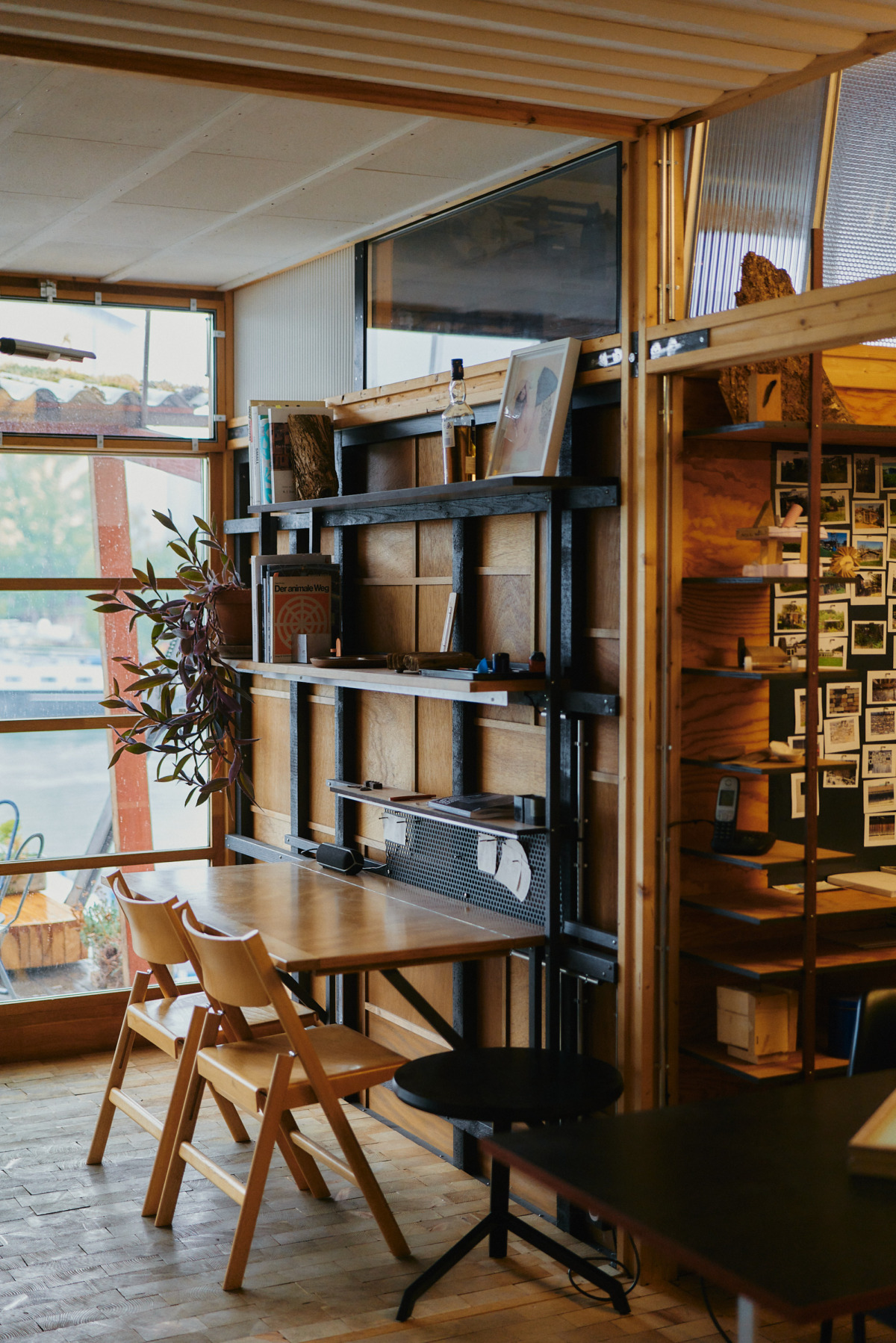

-
What did this exchange process reveal about how we can apply creativity and playfulness in the search for sustainable and circular solutions?
Yves— Our task was to adapt the principle of upcycling of Impact Acoustic’s industry to find an aesthetic that differs from the one that’s typically associated with reuse and leftovers—which tends to be a bit “shabby chic”. We wanted to achieve a grown-up aesthetic, a contemporary aesthetic. Impact Acoustic gave us a carte blanche and we tested out a lot of initial directions. We were preoccupied with patterns, repetition, and textile designs. A key reference was the Katsura Imperial Villa in Kyoto, which uses a lot of different natural materials, each with its natural color. We took a lot of inspiration from its use of clean lines to unite the diverse material palette with a calm aesthetic.
During this process, we were asking ourselves, “How do you create a harmonious whole from a bunch of random leftovers?” We didn’t want the INCH Wall to say, “Look, I’m made from old materials and I’m good because I’m recycled.” The process was playful, but the product isn’t necessarily; we hope that it’s a bit more elegant and moves the conversation along.
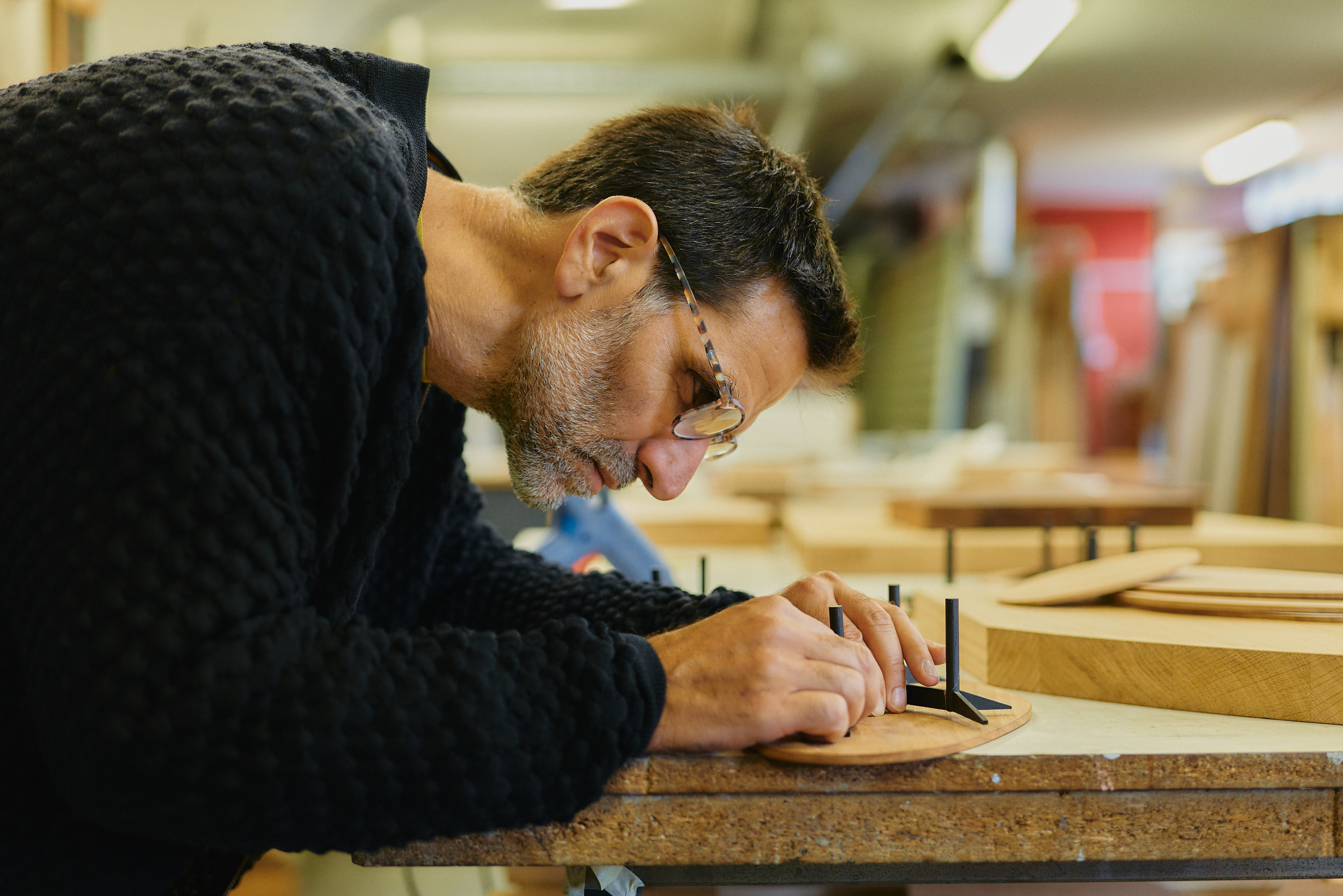
“The process was playful, but the product isn’t necessarily; we hope it’s a bit more elegant and moves the conversation on.”
-
Where do you see the potential of leftover materials in the future of circular design?
Thomas—I believe that the task for us as designers is to move beyond our tendency to view existing materials, conditions, or limitations as uninspiring, and reposition them simply as a new prerequisite that can be just as creative. We firmly believe that this approach to responsible material use is not a niche. It no longer exists in a bubble; it’s a design movement that is in full swing. Creative minds across industries—whether in industrial design, product design, interior design, scenography, or fashion—are being called upon by clients to engage with it. If they aren’t already open to circular thinking, it’s our opportunity and our responsibility to engage them in the transformation from linear to circular economies. This is no longer a “nice-to-have” or “cherry on top”; this is the new imperative for how product design can actually make a difference.

This interview was produced in collaboration with Swiss manufacturing company and sustainable design lab Impact Acoustic. It is part of an educational series that charts the evolution of Impact Acoustic and the creative possibilities of working with waste through the eyes of its founders and creative collaborators.
Interview and Text: Anna Dorothea Ker
Images: Conny Mirbach
DoP and Editor: Armin Kottek
